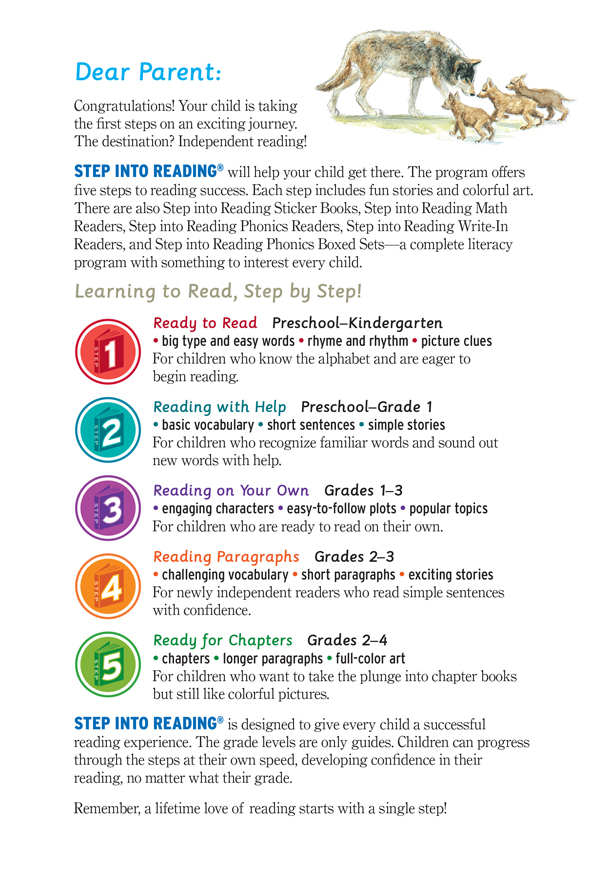
Text copyright 1992 by Joyce Milton
Cover art and interior illustrations copyright 1992 by Larry Schwinger All rights reserved.
Published in the United States by Random House Childrens Books, a division of Random House LLC, a Penguin Random House Company, New York. Step into Reading, Random House, and the Random House colophon are registered trademarks of Random House LLC. Visit us on the Web!
StepIntoReading.com
randomhouse.com/kids Educators and librarians, for a variety of teaching tools, visit us at
RHTeachersLibrarians.com
Library of Congress Cataloging-in-Publication Data Milton, Joyce.
Wild, wild wolves / by Joyce Milton ; illustrated by Larry Schwinger.
p. cm. (Step into reading. A step 3 book)
Summary: Introduces the natural history of wolves, examining their social structure, hunting tactics, growth, and development, and explores myths and legends about them.
ISBN 978-0-679-81052-0 (trade) ISBN 978-0-385-37480-4 (ebook)
1.
WolvesJuvenile literature. [1. Wolves.]
I. Schwinger, Larry, ill. II. III. III.
Series: Step into reading. Step 3 book.
QL737.C22 M56 2003 599.773dc21 2002013346 Random House Childrens Books supports the First Amendment and celebrates the right to read. v3.1
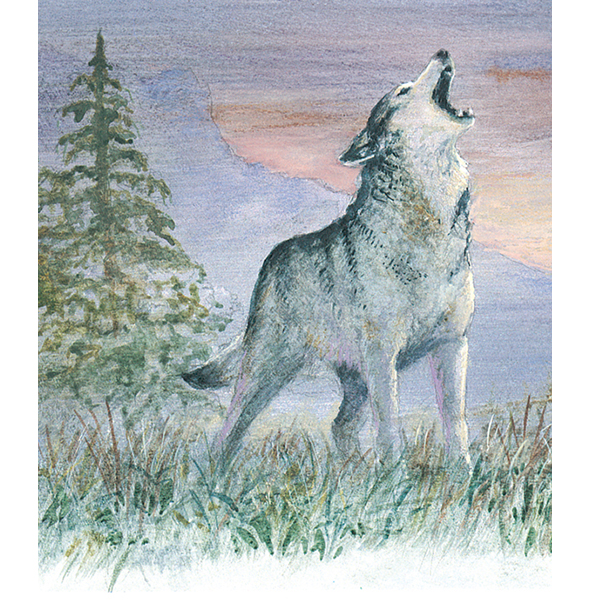
On a summer night in the far north a wolf is howling. OW-OOO! OW-OOO!
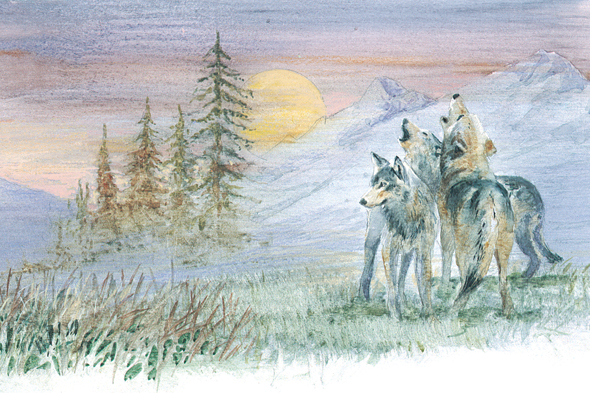
One by one, all the wolves for miles around throw back their heads and join in OW-OW-OW-OWOOO!
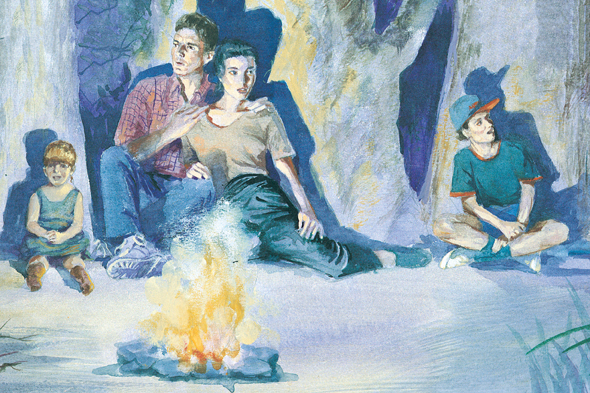
Miles away, a family camping near a big lake hears the howls. The children grab their parents hands.
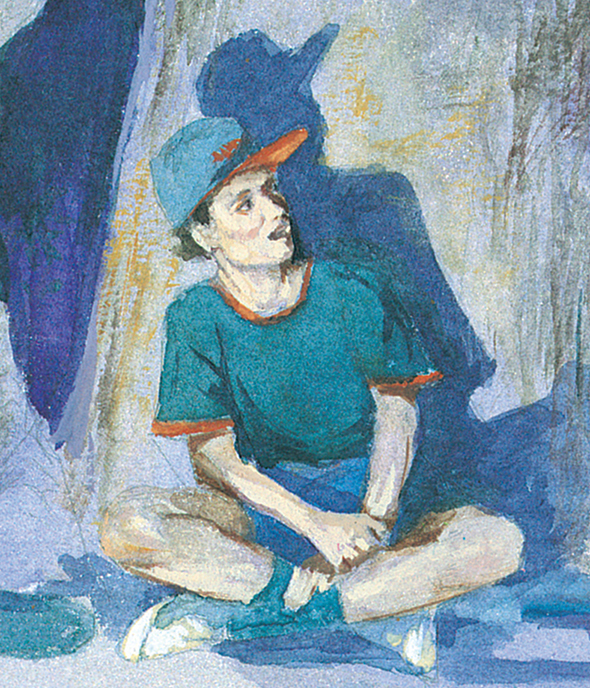
Nothing sounds as wild and scary as a howling wolf! Do wolves howl just before they attack? No! To a wolf, a howl is a friendly sound.
Wolves howl to let other wolves know where they are. They may even howl just for fun. 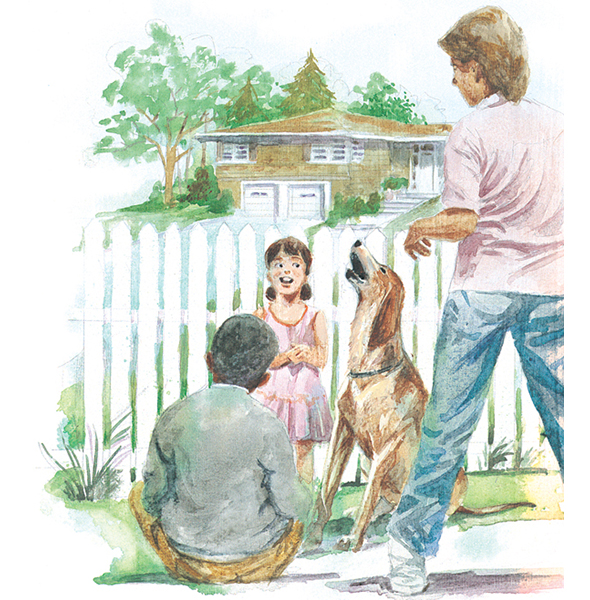 Sometimes a pet dog throws back its head and howls. It sounds just like a wolf! That is because wolves and dogs are close relatives.
Sometimes a pet dog throws back its head and howls. It sounds just like a wolf! That is because wolves and dogs are close relatives. 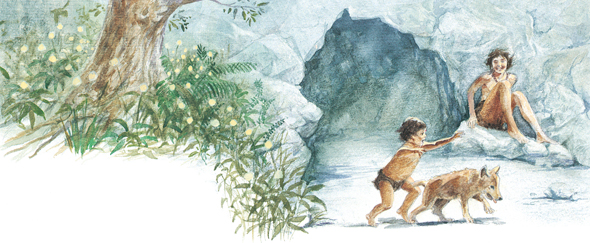 Long, long ago, when people lived in caves, some wolves began to wait nearby for the scraps of meat that people threw away. Cave children played with the wolf pups.
Long, long ago, when people lived in caves, some wolves began to wait nearby for the scraps of meat that people threw away. Cave children played with the wolf pups.
Little by little, the wolves became tame. 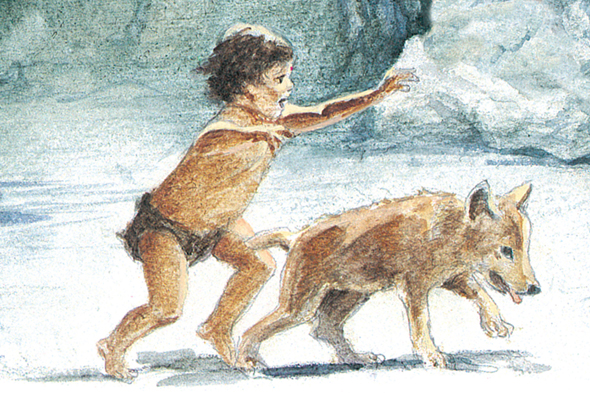 These tame wolves were the first pets. Every dog on earth today from tiny toy poodles to big St. Bernards is related to them.
These tame wolves were the first pets. Every dog on earth today from tiny toy poodles to big St. Bernards is related to them.  A few people still try to tame wolves. Eskimos have trained them to pull dogsleds.
A few people still try to tame wolves. Eskimos have trained them to pull dogsleds.
But a wolf is not a house pet. To be happy, it must be wild and free. A wolfs long legs are made for running up to 40 miles in a single day!  Its huge paws can be as large as a grown-ups hand.
Its huge paws can be as large as a grown-ups hand. 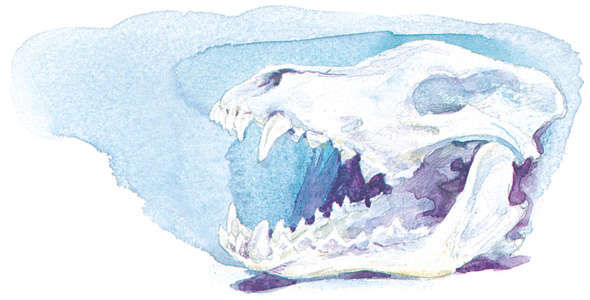 Its powerful jaws can crack the leg bone of a moose with a single snap.
Its powerful jaws can crack the leg bone of a moose with a single snap. 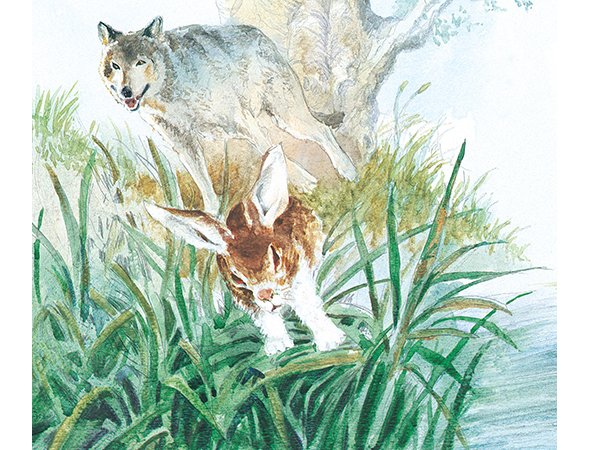 Wolves are hunters. To stay alive, they need fresh meat lots of it.
Wolves are hunters. To stay alive, they need fresh meat lots of it.
A hungry wolf can eat 20 pounds of meat at a single meal. Thats like eating one hundred hamburgers! 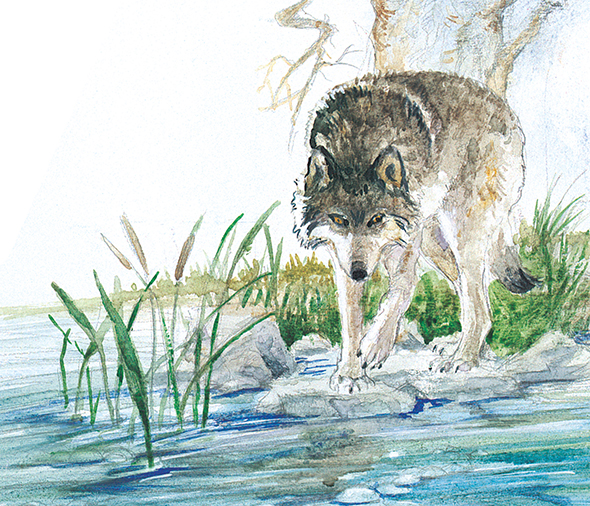 To get all this meat, wolves usually hunt big animals like deer and moose. But a hungry wolf will chase and eat a rabbit or a mouse. It may even go fishing!
To get all this meat, wolves usually hunt big animals like deer and moose. But a hungry wolf will chase and eat a rabbit or a mouse. It may even go fishing! 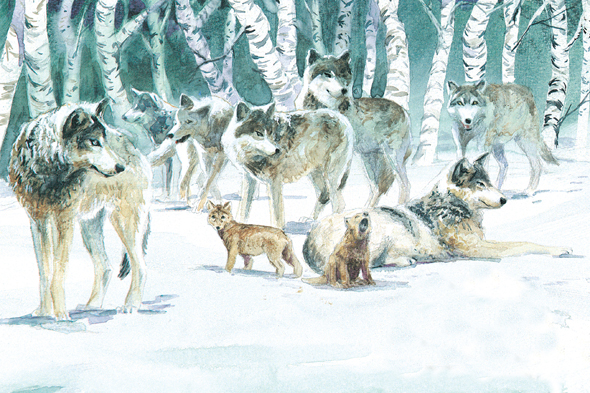 Wolves live in groups called packs. The pack members talk to each other with their bodies.
Wolves live in groups called packs. The pack members talk to each other with their bodies. 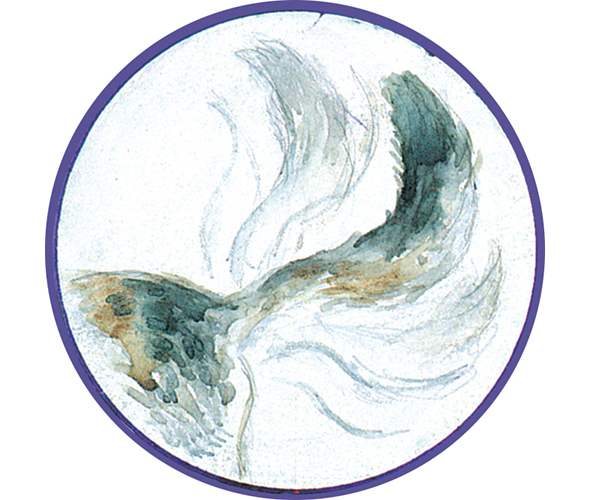 When a wolf is happy, it wags its whole tail.
When a wolf is happy, it wags its whole tail. 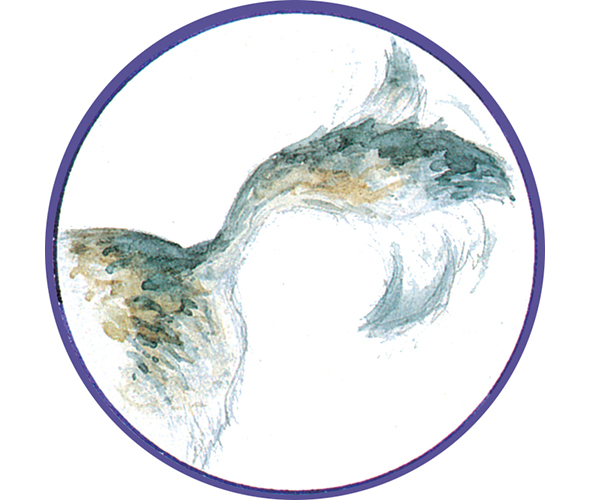 If it wags just the tip, watch out! It is getting ready to attack.
If it wags just the tip, watch out! It is getting ready to attack.  If it wags just the tip, watch out! It is getting ready to attack.
If it wags just the tip, watch out! It is getting ready to attack.
Other wolves know these signals. The signals help the wolves live together without fighting. 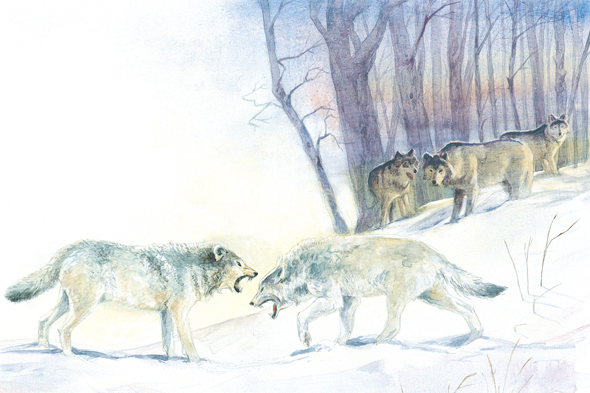 Every pack has a lead male and a lead female. The lead male is strong and smart. He will fight any wolf that tries to take over his pack.
Every pack has a lead male and a lead female. The lead male is strong and smart. He will fight any wolf that tries to take over his pack. 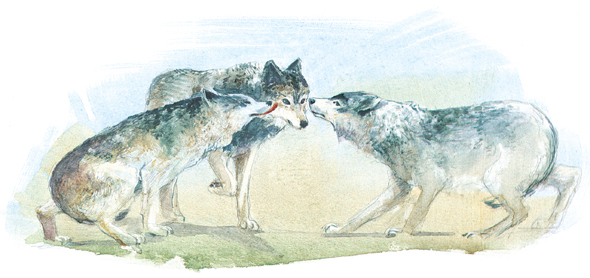 The lead male shows he is the boss by the way he acts.
The lead male shows he is the boss by the way he acts.  The lead male shows he is the boss by the way he acts.
The lead male shows he is the boss by the way he acts.
He looks the other wolves right in the eye. The other wolves tuck their tails between their legs. They rub noses with the leader and lick his face. 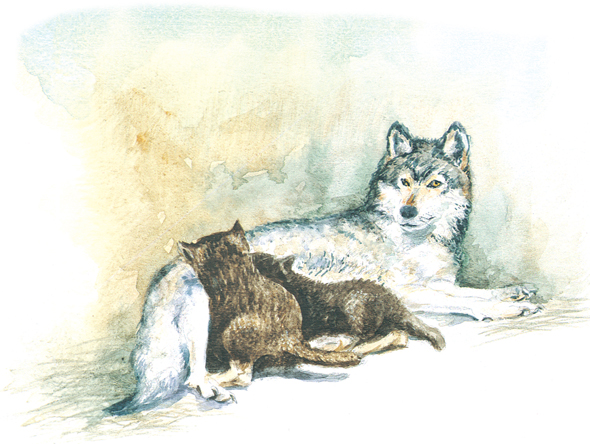





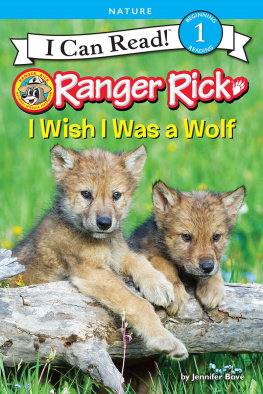
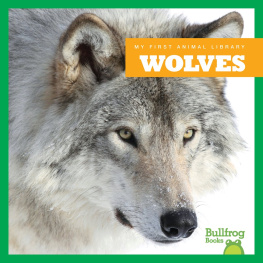


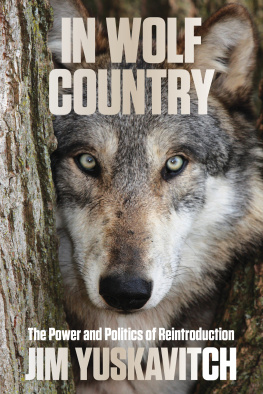

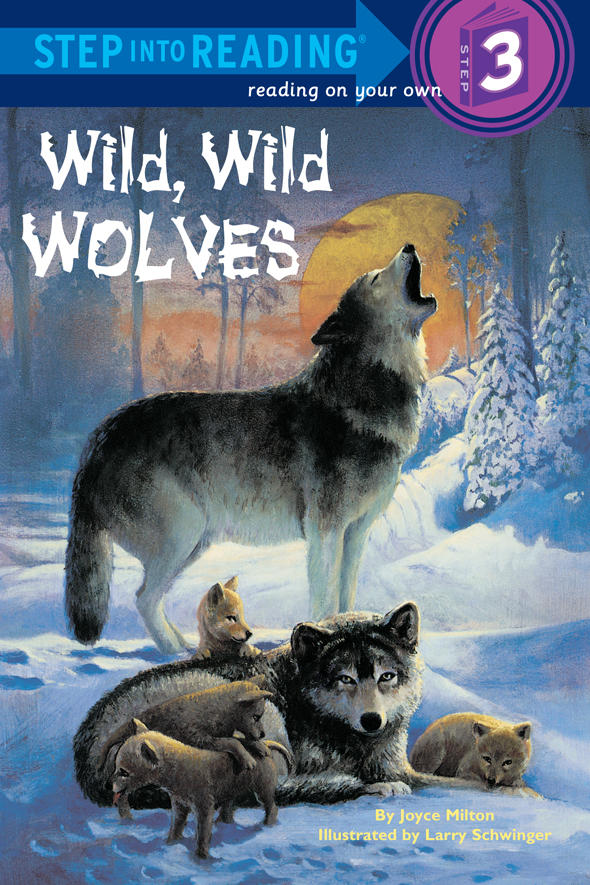


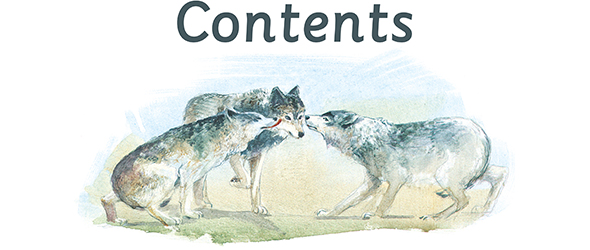
 On a summer night in the far north a wolf is howling. OW-OOO! OW-OOO!
On a summer night in the far north a wolf is howling. OW-OOO! OW-OOO!  One by one, all the wolves for miles around throw back their heads and join in OW-OW-OW-OWOOO!
One by one, all the wolves for miles around throw back their heads and join in OW-OW-OW-OWOOO!  Miles away, a family camping near a big lake hears the howls. The children grab their parents hands.
Miles away, a family camping near a big lake hears the howls. The children grab their parents hands.  Nothing sounds as wild and scary as a howling wolf! Do wolves howl just before they attack? No! To a wolf, a howl is a friendly sound.
Nothing sounds as wild and scary as a howling wolf! Do wolves howl just before they attack? No! To a wolf, a howl is a friendly sound.  Sometimes a pet dog throws back its head and howls. It sounds just like a wolf! That is because wolves and dogs are close relatives.
Sometimes a pet dog throws back its head and howls. It sounds just like a wolf! That is because wolves and dogs are close relatives.  Long, long ago, when people lived in caves, some wolves began to wait nearby for the scraps of meat that people threw away. Cave children played with the wolf pups.
Long, long ago, when people lived in caves, some wolves began to wait nearby for the scraps of meat that people threw away. Cave children played with the wolf pups. These tame wolves were the first pets. Every dog on earth today from tiny toy poodles to big St. Bernards is related to them.
These tame wolves were the first pets. Every dog on earth today from tiny toy poodles to big St. Bernards is related to them.  A few people still try to tame wolves. Eskimos have trained them to pull dogsleds.
A few people still try to tame wolves. Eskimos have trained them to pull dogsleds. Its huge paws can be as large as a grown-ups hand.
Its huge paws can be as large as a grown-ups hand.  Its powerful jaws can crack the leg bone of a moose with a single snap.
Its powerful jaws can crack the leg bone of a moose with a single snap.  Wolves are hunters. To stay alive, they need fresh meat lots of it.
Wolves are hunters. To stay alive, they need fresh meat lots of it. To get all this meat, wolves usually hunt big animals like deer and moose. But a hungry wolf will chase and eat a rabbit or a mouse. It may even go fishing!
To get all this meat, wolves usually hunt big animals like deer and moose. But a hungry wolf will chase and eat a rabbit or a mouse. It may even go fishing!  Wolves live in groups called packs. The pack members talk to each other with their bodies.
Wolves live in groups called packs. The pack members talk to each other with their bodies.  When a wolf is happy, it wags its whole tail.
When a wolf is happy, it wags its whole tail.  If it wags just the tip, watch out! It is getting ready to attack.
If it wags just the tip, watch out! It is getting ready to attack.  Every pack has a lead male and a lead female. The lead male is strong and smart. He will fight any wolf that tries to take over his pack.
Every pack has a lead male and a lead female. The lead male is strong and smart. He will fight any wolf that tries to take over his pack.  The lead male shows he is the boss by the way he acts.
The lead male shows he is the boss by the way he acts. 